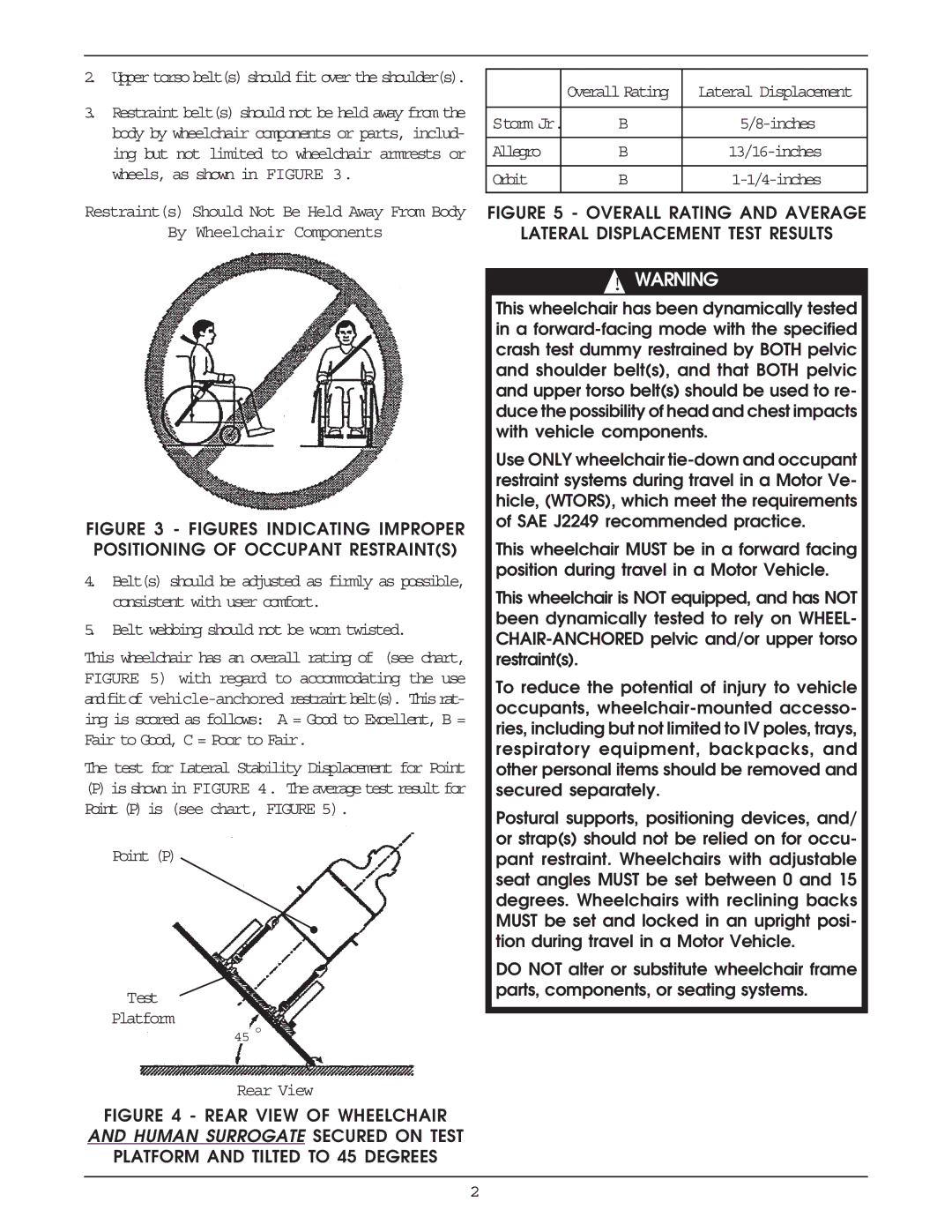
2.Upper torso belt(s) should fit over the shoulder(s).
3.Restraint belt(s) should not be held away from the body by wheelchair components or parts, includ- ing but not limited to wheelchair armrests or wheels, as shown in FIGURE 3.
Restraint(s) Should Not Be Held Away From Body
By Wheelchair Components
| Overall Rating | Lateral Displacement |
|
|
|
Storm Jr. | B |
|
|
|
|
Allegro | B | |
|
|
|
Orbit | B | |
|
|
|
FIGURE 5 - OVERALL RATING AND AVERAGE
LATERAL DISPLACEMENT TEST RESULTS
FIGURE 3 - FIGURES INDICATING IMPROPER POSITIONING OF OCCUPANT RESTRAINT(S)
4.Belt(s) should be adjusted as firmly as possible, consistent with user comfort.
5.Belt webbing should not be worn twisted.
This wheelchair has an overall rating of (see chart, FIGURE 5) with regard to accommodating the use andfitof
The test for Lateral Stability Displacement for Point
(P)is shown in FIGURE 4. The average test result for Point (P) is (see chart, FIGURE 5).
Point (P)
Test
Platform
45![]()
![]() o
o
Rear View
FIGURE 4 - REAR VIEW OF WHEELCHAIR AND HUMAN SURROGATE SECURED ON TEST PLATFORM AND TILTED TO 45 DEGREES
!WARNING
This wheelchair has been dynamically tested in a
Use ONLY wheelchair
This wheelchair MUST be in a forward facing position during travel in a Motor Vehicle.
This wheelchair is NOT equipped, and has NOT been dynamically tested to rely on WHEEL-
To reduce the potential of injury to vehicle occupants,
Postural supports, positioning devices, and/ or strap(s) should not be relied on for occu- pant restraint. Wheelchairs with adjustable seat angles MUST be set between 0 and 15 degrees. Wheelchairs with reclining backs MUST be set and locked in an upright posi- tion during travel in a Motor Vehicle.
DO NOT alter or substitute wheelchair frame parts, components, or seating systems.
2
